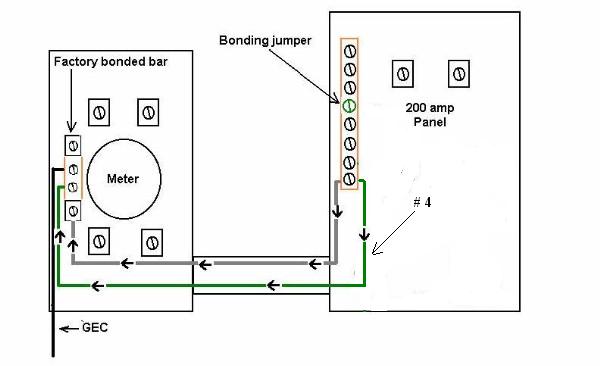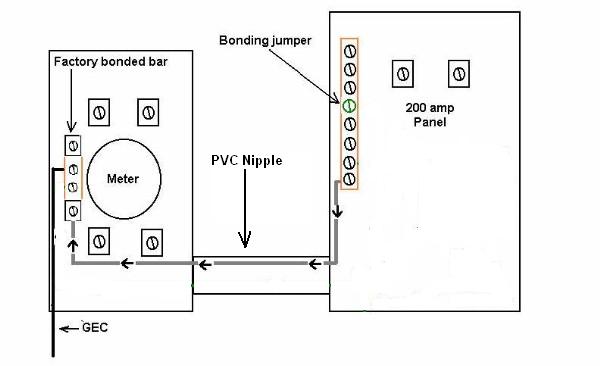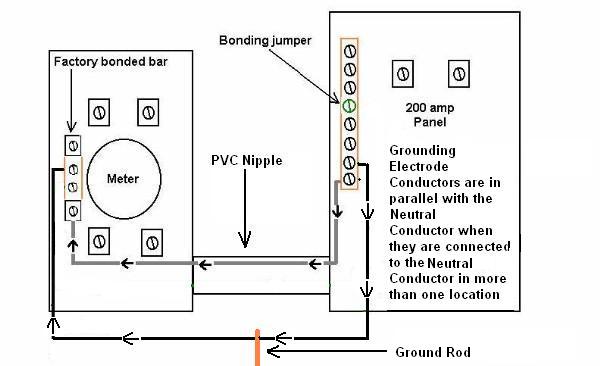We recently installed a 200amp service to an existing residence with 3-3/0 and 1-#4 copper conductors from the meter base to the main panel. The #4 was terminated at the bonded neutral bar in the main panel. We also installed from the main panel bonded neutral bar 1-#4 to the incoming copper water pipe and 1-#4 to the new outside 8' ground rod. The inspector wants us to install a continuos #4 from the ground rod thru the meter base to the main panel bonded neutral bar. He accepts the #4 to the water pipe. Any thoughts on this?
[ September 13, 2005, 01:53 PM: Message edited by: elecon ]
[ September 13, 2005, 01:53 PM: Message edited by: elecon ]





